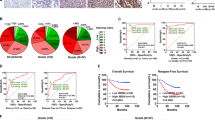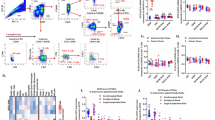Abstract
Extracellular vesicles (EVs) are considered as important mediators of intercellular communication, which carry a diverse repertoire of genetic information between cells. This feature of EVs can be used and improved to advance their therapeutic potential. We have previously shown that genetically engineered EVs carrying the suicide gene mRNA and protein—cytosine deaminase (CD) fused to uracil phosphoribosyltransferase (UPRT)—inhibited schwannoma tumor growth in vivo. To further examine whether this approach can be applied to other cancer types, we established a subcutaneous xenograft glioblastoma tumor model in mice, as glioblastoma represents the most common primary brain tumor, which is highly aggressive compared with the original schwannoma tumor model. U87-MG glioblastoma cells were implanted into the flanks of nude SCID mice, and the animals were intratumorally injected with the EVs isolated from the cells expressing EGFP or CD-UPRT. After the intraperitoneal administration of the prodrug 5-fluorocytosine, the tumor growth was assessed by regular caliper measurements. Our data revealed that the treatment with the CD-UPRT-enriched EVs significantly reduced the tumor growth in mice. Taken together, our findings suggest that EVs uploaded with therapeutic CD-UPRT mRNA/protein may be a useful tool for glioblastoma treatment.
This is a preview of subscription content, access via your institution
Access options
Subscribe to this journal
Receive 12 print issues and online access
$259.00 per year
only $21.58 per issue
Buy this article
- Purchase on Springer Link
- Instant access to full article PDF
Prices may be subject to local taxes which are calculated during checkout





Similar content being viewed by others
References
Bianco F, Pravettoni E, Colombo A, Schenk U, Moller T, Matteoli M et al. Astrocyte-derived ATP induces vesicle shedding and IL-1 beta release from microglia. J Immunol 2005; 174: 7268–7277.
Pizzirani C, Ferrari D, Chiozzi P, Adinolfi E, Sandona D, Savaglio E et al. Stimulation of P2 receptors causes release of IL-1beta-loaded microvesicles from human dendritic cells. Blood 2007; 109: 3856–3864.
Pilzer D, Fishelson Z . Mortalin/GRP75 promotes release of membrane vesicles from immune attacked cells and protection from complement-mediated lysis. Int Immunol 2005; 17: 1239–1248.
Balaj L, Lessard R, Dai L, Cho YJ, Pomeroy SL, Breakefield XO et al. Tumour microvesicles contain retrotransposon elements and amplified oncogene sequences. Nat Commun 2011; 2: 180.
Noerholm M, Balaj L, Limperg T, Salehi A, Zhu LD, Hochberg FH et al. RNA expression patterns in serum microvesicles from patients with glioblastoma multiforme and controls. BMC Cancer 2012; 12: 22.
Waldenstrom A, Genneback N, Hellman U, Ronquist G . Cardiomyocyte microvesicles contain DNA/RNA and convey biological messages to target cells. PLoS One 2012; 7: e34653.
Ohno S, Takanashi M, Sudo K, Ueda S, Ishikawa A, Matsuyama N et al. Systemically injected exosomes targeted to EGFR deliver antitumor microRNA to breast cancer cells. Mol Ther 2013; 21: 185–191.
Ridder K, Keller S, Dams M, Rupp AK, Schlaudraff J, Del Turco D et al. Extracellular vesicle-mediated transfer of genetic information between the hematopoietic system and the brain in response to inflammation. PLoS Biol 2014; 12: e1001874.
Fleury A, Martinez MC, Le Lay S . Extracellular vesicles as therapeutic tools in cardiovascular diseases. Front Immunol 2014; 5: 370.
Omuro A, DeAngelis LM . Glioblastoma and other malignant gliomas: a clinical review. JAMA 2013; 310: 1842–1850.
Cloughesy TF, Cavenee WK, Mischel PS . Glioblastoma: from molecular pathology to targeted treatment. Annu Rev Pathol 2014; 9: 1–25.
Huber BE, Austin EA, Richards CA, Davis ST, Good SS . Metabolism of 5-fluorocytosine to 5-fluorouracil in human colorectal tumor cells transduced with the cytosine deaminase gene: significant antitumor effects when only a small percentage of tumor cells express cytosine deaminase. Proc Natl Acad Sci USA 1994; 91: 8302–8306.
Boucher PD, Im MM, Freytag SO, Shewach DS . A novel mechanism of synergistic cytotoxicity with 5-fluorocytosine and ganciclovir in double suicide gene therapy. Cancer Res 2006; 66: 3230–3237.
Mizrak A, Bolukbasi MF, Ozdener GB, Brenner GJ, Madlener S, Erkan EP et al. Genetically engineered microvesicles carrying suicide mRNA/protein inhibit schwannoma tumor growth. Mol Ther 2013; 21: 101–108.
Bolukbasi MF, Mizrak A, Ozdener GB, Madlener S, Strobel T, Erkan EP et al. miR-1289 and 'Zipcode'-like sequence enrich mRNAs in microvesicles. Mol Ther Nucleic Acids 2012; 1: e10.
Ho WY, Yeap SK, Ho CL, Rahim RA, Alitheen NB . Development of multicellular tumor spheroid (MCTS) culture from breast cancer cell and a high throughput screening method using the MTT assay. PLoS One 2012; 7: e44640.
Erbs P, Regulier E, Kintz J, Leroy P, Poitevin Y, Exinger F et al. In vivo cancer gene therapy by adenovirus-mediated transfer of a bifunctional yeast cytosine deaminase/uracil phosphoribosyltransferase fusion gene. Cancer Res 2000; 60: 3813–3822.
Kaliberov SA, Chiz S, Kaliberova LN, Krendelchtchikova V, Della Manna D, Zhou T et al. Combination of cytosine deaminase suicide gene expression with DR5 antibody treatment increases cancer cell cytotoxicity. Cancer Gene Ther 2006; 13: 203–214.
Adachi Y, Tamiya T, Ichikawa T, Terada K, Ono Y, Matsumoto K et al. Experimental gene therapy for brain tumors using adenovirus-mediated transfer of cytosine deaminase gene and uracil phosphoribosyltransferase gene with 5-fluorocytosine. Hum Gene Ther 2000; 11: 77–89.
Chung-Faye GA, Chen MJ, Green NK, Burton A, Anderson D, Mautner V et al. In vivo gene therapy for colon cancer using adenovirus-mediated, transfer of the fusion gene cytosine deaminase and uracil phosphoribosyltransferase. Gene Therapy 2001; 8: 1547–1554.
Nath S, Devi GR . Three-dimensional culture systems in cancer research: focus on tumor spheroid model [review]. Pharmacol Ther 2016; 163: 94–108.
Erkan EP, Strobel T, Lewandrowski G, Tannous B, Madlener S, Czech T et al. Depletion of minichromosome maintenance protein 7 inhibits glioblastoma multiforme tumor growth in vivo. Oncogene 2014; 33: 4778–4785.
El-Andaloussi S, Lee Y, Lakhal-Littleton S, Li J, Seow Y, Gardiner C et al. Exosome-mediated delivery of siRNA in vitro and in vivo. Nat Protoc 2012; 7: 2112–2126.
Acknowledgements
This work was supported, in part, by Melodie Privatstiftung (NS), EU-FP7-PEOPLE-2011-CIG (OS) and the Children's Cancer Research Institute St Anna Cancer Research Fund-0017 (OS).
Author information
Authors and Affiliations
Corresponding authors
Ethics declarations
Competing interests
The authors declare no conflict of interest.
Additional information
Supplementary Information accompanies the paper on Cancer Gene Therapy website
Rights and permissions
About this article
Cite this article
Erkan, E., Senfter, D., Madlener, S. et al. Extracellular vesicle-mediated suicide mRNA/protein delivery inhibits glioblastoma tumor growth in vivo. Cancer Gene Ther 24, 38–44 (2017). https://doi.org/10.1038/cgt.2016.78
Received:
Revised:
Accepted:
Published:
Issue Date:
DOI: https://doi.org/10.1038/cgt.2016.78
This article is cited by
-
Suicide gene strategies applied in ovarian cancer studies
Cancer Gene Therapy (2023)
-
The roles of small extracellular vesicles in cancer and immune regulation and translational potential in cancer therapy
Journal of Experimental & Clinical Cancer Research (2022)
-
Exosomes for mRNA delivery: a novel biotherapeutic strategy with hurdles and hope
BMC Biotechnology (2021)
-
Novel approaches in cancer treatment: preclinical and clinical development of small non-coding RNA therapeutics
Journal of Experimental & Clinical Cancer Research (2021)
-
Particulate mediators of the bystander effect linked to suicide and interferon-β transgene expression in melanoma cells
Gene Therapy (2021)



